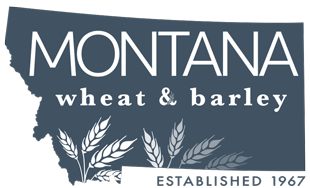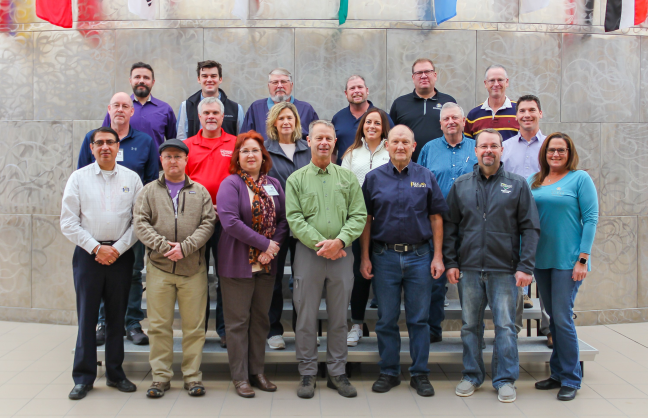FORWARD
Many of you are aware that the Montana Wheat & Barley Committee (MWBC) sends newly-appointed directors to the Kansas State University (KSU) flour milling short course. Held at KSU’s IGP Institute, this invaluable course provides producers, grain trade representatives, state and national wheat staff members three days of in-depth training in the field of end-use. KSU is the world leader for milling and baking instruction. As you’ll read below from MWBC Director Lee Dahlman, KSU provides a hands-on understanding of “…the knowledge of the baker,” which is vital to continually improving Montana’s wheat crop and the bottom line.
FROM MWBC DIRECTOR LEE DAHLMAN, DUTTON
I attended the IGP flour milling course in Manhattan, Kansas, at KSU December 11-13, 2023. K-State is the only university in the United States currently offering a degree in flour milling. The objective was to learn the basic principles of flour milling and to better understand the relationship between wheat quality and flour performance. We met through morning classroom lectures and hands-on training in the IGP milling laboratories.
Morning lectures contained mostly education of flour qualities from protein content to minerals. Gluten was a large focus as well including its content, value and health concerns. Whether a large or a small bakery, it is important to be educated about which flours make different specialties. One flour does not fit all.
Following lectures, we divided into groups in the IGP labs to study the six different classes of wheat. Each lab used a different class of wheat to bake white bread, sugar cookies and white cake. Some classes of wheat, such as hard red winter, made a perfect loaf of bread, while another class of wheat proved to be less — the consistency and taste were not desirable.
Hard amber durum is the hardest kernel of all classes and is the most unique class for its flour specialty, as well as its semolina for certain classes of noodles. It’s interesting that a kernel of grain can be ground 20-plus times before it reaches fully-ground flour. It is also amazing how many different qualities of flour come from the same kernel of wheat, yet are packaged according to what product they will become. Some must be blended back depending on the mill order such as protein and qualities of the baking purpose.
I was surprised to learn how many metric tons of US wheat flour is exported to foreign countries. When you’re in a foreign country, there is a good chance you may be consuming a product made from US flour. No matter the argument, bakeries in foreign countries really like the quality of US wheat. It reinforced why Montana wheat is so valuable. Our higher protein content plus environmental factors in our wheat production make a difference to buyers. The end-user’s knowledge of how to properly choose the right flour is critical when making different products for their consumer.
Last but not least, we learned that cleaning wheat is very important. Chaff, straw, rocks, metals, non-metals, disease, insect damage…all of these elements matter to the end product. The process was fascinating. They used air, magnets, water and even lasers to clean wheat!
I returned home from this experience with a new perspective, especially for the care and concern for human safety in consumption. We need to grow the best quality and stay knowledgeable to meet that need. Thoroughly cleaning and quality milling flour is so important, but the knowledge of the baker whether it be a commercial baker, street corner baker or the home baker is vital. As producers, we need to educate ourselves of the end-use in order to excel the quality of grain we raise. If every adult member of our households understood this, we could more positively influence our families, our children and our communities about the quality of the foods we eat, especially grain which is a vital part of our diet.

